The Many Faces of Time (Blues Report)
Published in: 34. In Worlds and TimesIn the final months of 2023, “Apraksin Blues” hosted a series of three thematically linked seminars in its St. Petersburg editorial offices on Apraksin Lane, under the now well-tested banner of “Boogie-Woogie ῥῆμα.” The speakers—molecular biologist Marina Chernysheva (November 18), Tibetologist Vagid Ragimov (November 25), and philosopher Andrey Patkul (December 5)—view time from the standpoint of their fields of expertise.
Just over two weeks separate the first seminar from the last. The program is deliberately intense, coloring St. Petersburg’s Blues season with varied approaches to time’s nature. The gatherings prepare attendees for the path through winter and leave much to think about in future seasons.
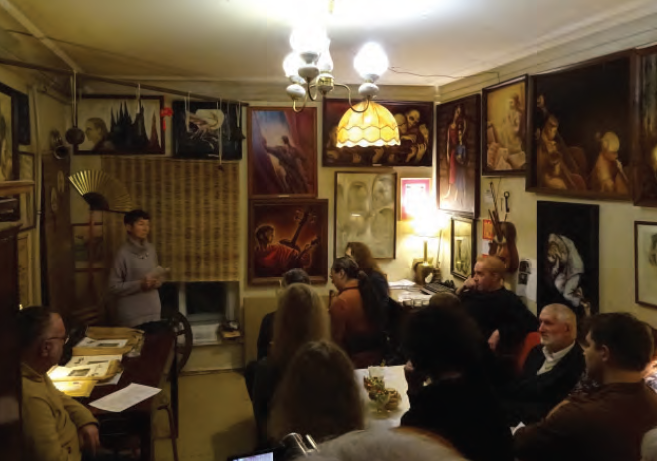
1. The Energy Time of Biosystems
Marina Chernysheva’s lecture focuses on the relationship between time and the body, a topic she also explores her 2016 book, The Temporal Structure of Biosystems and Biological Time. She presents her ideas in a calm and friendly manner, drawing on extensive knowledge. To help attendees, she provides handouts that list key points, often using equations. Chernysheva speaks clearly about time’s biological side, including her own experiences, blending scientific facts with personal and ethical reflections.
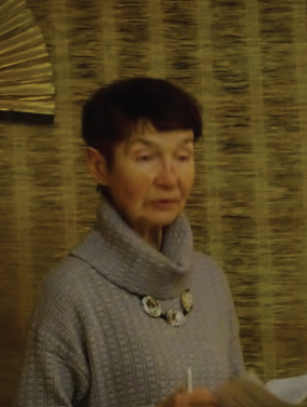
Marina Cherysheva
She starts by giving a brief history of how time has been viewed by important thinkers in Western civilization, such as Heraclitus, Zeno, Plato, Aristotle, Newton, Leibniz, Kozyrev, Vernadsky, and Schrödinger. Then she moves on to modern scientific theories that connect time, energy, and biology. While it’s impossible to cover everything she discusses, the main ideas are clear.
Chernysheva explains that time is a form of energy present in living beings and the non-living universe. She highlights three roles of biological time: processing information, keeping a balance between information and energy in biological systems, and adjusting to our environment and interactions to optimize these resources.
The structure of the universe influences how we experience biological time. Balancing cyclical and linear processes, the universe seeks synchronization among all living things, including humans. Our biological systems help us synchronize internally and with the outside world. These processes, whether we’re aware of them or not, create a new balance even as living beings face losses, constantly using energy while trying to regain it, often in the form of information. Thoughts, actions, and experiences can all be seen as information. Like energy, information needs careful processing, both consciously and unconsciously.
When we do hard mental work, there’s a practical reason we crave breaks for fresh air: to keep our brains from overheating. This is a way of seeking balance in both conscious and unconscious processes inside us. Our success in this depends on how we engage with the present moment, which becomes more real through our awareness of change.
Our well-being relies on our unique human ability to reflect on the past, present, and future within the so-called temporal window of our consciousness. This window can and should be expanded. Our minds play a crucial role in this, storing and retrieving memories while measuring time. To support our biological processes, our minds help organize information into labeled categories, making it useful and manageable. Regularly organizing and cleaning up this information is essential for keeping it in shape.
Thoughts, which involve generating and processing information, represent energy intertwined with the energy of time. This concept relates to the second law of thermodynamics, which deals with entropy in thermodynamic systems, as well as the work of physicist Léon Brillouin on open thermodynamically unstable systems. The flow of thoughts, as an energy exchange within our systems, needs modulation and adjustment according to quantitative and qualitative factors. This cognitive work occurs both when waking and sleeping, including dreams, which help reconnect and purify fragments of our consciousness. Chernysheva says this is why we often forget our dreams and why we usually shouldn’t dwell on their significance or regret their vanishing—”Oh, what a lovely dream! Why did it disappear?”—because they serve a specific biological function that ends upon waking. Chernysheva recalls a dream where her mother appeared, sitting on a crocodile in the street. She doesn’t know the dream’s meaning but thinks the relief it gave her consciousness means more.
The audience includes physicists, philosophers, artists, writers, and representatives from both the exact sciences and the humanities, spanning various religious backgrounds. Each participant brings their own perspective on these biological principles’ significance for real people, drawing from their experiences and understanding of psychology, physiology, and cultural traditions. Some attendees keep asking, “So what is time, after all?” —still unconvinced that time is a form of energy and viewing it more as a medium for energy and matter. It would be interesting to think more about the kinds of changes people can or can’t comprehend, and how this varies from person to person based on individual experiences and development. Some might want to expand their understanding of biological time and how to navigate it beyond what Chernysheva presents. Some of us, for instance, like to remember and think about our dreams. Yet her basic ideas admit personal interpretation and adaptation. Her findings and theories about biosystems have profound repercussions for our lives.
Chernysheva appreciates the audience’s thoughtful and engaging questions. When a humanities specialist asks how culture relates to biological time, the biologist replies that she considers music and art good ways to measure time and shape our consciousness. She also emphasizes that while biological time can include the idea of eternity, “eternity is not just endless time; it’s the absence of time.”
Chernysheva also mentions that some questions haven’t been explored in her research yet and will need further attention from specialists or herself. During the seminar, she’s even had an idea for her next book. She plans to start writing it soon.
2. Trading Time for Mahamudra
In Vagid Ragimov’s teachings on Tibetan Buddhism, eternity as the absence of time figures as a baseline guide for consciousness. In Buddhism, conventional time requires spiritual rethinking. One practice for attaining such understanding is Mahamudra, a part of Tibetan Buddhism’s Kagyu school, associated with the Six Yogas of Naropa. Tibetan Buddhism has passed down this practice for a thousand years.
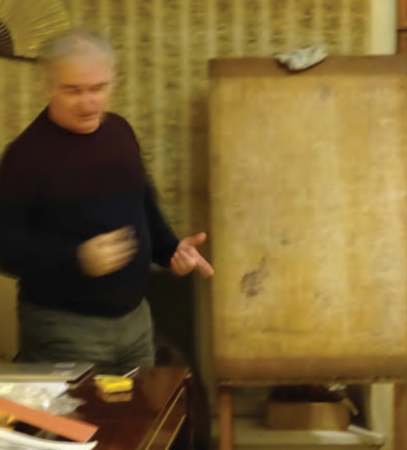
Vagid Ragimov
Through Mahamudra, practitioners learn to expand their self-identity. Ragimov clarifies that it’s “good to connect with others,” while also important to realize personality is just one aspect of who we are. Fuller realization happens through “subtle channels,” developed using visualization, mantras, and breathing techniques. Ragimov notes, “Mahamudra is based on what actually is, and that’s why it works.”
Mahamudra shares some concepts with all of Buddhism, like the “middle way,” but it also has unique elements. One key text Ragimov has translated is The Essence of the Ocean of True Meaning, written in the 16th century by the IX Karmapa Wangchuk Dorje. Ragimov’s fluency is evident as he jots down Tibetan words and symbols in chalk on a wooden board, which still shows the smeared remnants of past lessons. Going deeper into his explication, he becomes inspired and responds to questions vigorously.
To master Mahamudra, having a guru, or spiritual teacher, is essential. Ragimov explains that a guru can take many forms; it doesn’t have to be a person. For example, in a classic painting he shows us, elephants form a spiral staircase to the sky, symbolizing a guru. Texts, symbols, or nature can be a guru. Earth, water, and mountains can teach different virtues. Incense is a traditional meditation object, but any object can do, and Mahamudra meditation can focus on internal objects or even have no object at all.
Mahamudra helps practitioners experience their state of consciousness. They move from meditation for its own sake to exploring the nature of their minds. Any meditation technique in Mahamudra strengthens their practice and helps them persist. Ultimately, Mahamudra reveals that time does not exist. Tibetan Buddhism teaches that belief in the conventional understanding of time is a limited perspective. Referred to as “sem” in Tibetan Buddhism, this narrow understanding can often be mistaken. True understanding shows that “only the moment exists,” but even this moment is difficult to grasp fully. Recognizing this uncertainty helps enhance compassion, making it “freer” and “lighter,” Ragimov says.
Both absolute and conditional realities exist at the same time. The conditional reality we experience is not unnecessary; instead, it forms a starting point for purifying our consciousness in our human lives. Unlike the gods, who already exist in absolute reality and have no need to seek truth, humans have the potential for growth and development.
When someone familiar with Buddhism asks Ragimov if relying on familiar rituals, known as “taking refuge,” could hinder spiritual progress, he replies that this attachment is not harmful at early stages. It’s just good to recognize it if it comes up on the path to understanding the true nature of all things.
As Ragimov discusses Tibetan Buddhism’s written heritage, the audience expresses interest in translation. Ragimov explains that Tibetan Buddhism is less known than other forms that originated in India, often using terms from Indian philosophy. To help people understand Tibetan Buddhist ideas, it is sometimes acceptable to use Sanskrit terms instead of Tibetan ones. For example, he translates the Tibetan word “khorwa” as the Sanskrit “samsara,” which describes the cycle of birth and death. Ragimov has also accomplished the first poetic translation of The Songs of Milarepa from Tibetan to Russian. A mention of this leads to questions about his techniques, which also demonstrate Mahamudra’s practical benefits.
Eventually, someone suggests that Ragimov take a break. It’s easy to lose track of time with so much sharing in one session, but the audience still wants to hear more. As we move from the formal lecture to a more relaxed conversation over tea and coffee, there’s a sense that we’ve collectively explored the connection between conditional and absolute time, creating a newly balanced understanding. We hope to keep building on this experience of freedom and community. This growth also raises questions about personal responsibility, but Ragimov offers his help for the future. He invites anyone interested to join him at the Diamond Way Meditation Center on Nikolsky Lane and to attend his daily lessons based on The Essence of the Ocean of True Meaning. He also hints that lessons in Tibetan language and on Milarepa may resume, becoming part of the ongoing history of the St. Petersburg offices of Apraksin Blues.
3. Heideggerian Time as a Drive for Understanding
In Martin Heidegger’s philosophy, which guides our next seminar, the intellect is crucial for understanding our relationship with time. Through intellectual exploration, time becomes a key element in ontology, the study of being. Heidegger argues that temporality is essential to grasping what it means to be. Andrey Patkul’s book, The Idea of Philosophy as the Science of Being in Martin Heidegger’s Fundamental Ontology (St. Petersburg: Nauka, 2020), provides an insightful interpretation of Heidegger’s ideas. An evening with Patkul turns the book’s content into an engaging discussion with a sense of personal urgency.
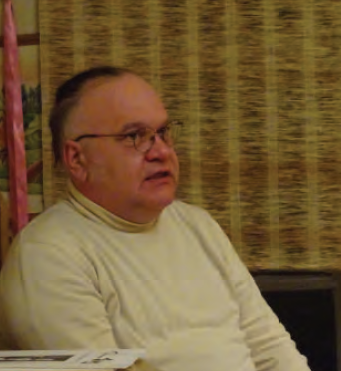
Andrey Patkul
On this particular evening, the air is bitterly cold, and due to poor traffic and road conditions, many participants arrive a bit late, including the speaker. Yet once Patkul steps into the warm room and takes his seat, he sets a quick pace—as a committed professional—beginning a talk on Heidegger that turns out to be surprisingly accessible. Those who’d felt anxious about attending due to Heidegger’s reputation for opacity needn’t have worried.
Patkul explains that Heidegger’s philosophy draws from various traditions, including neo-Kantianism, phenomenology, and Christian theology. Heidegger’s main goal is to define what being (or Sein in German) is, what essence (Wesen) means, and how they differ. This exploration is central to Heidegger’s major work, Being and Time (Sein und Zeit), as well as his other writings.
To simplify these complex ideas, it’s possible to say that essence refers to what exists independently and unconditionally. In contrast, being is what is given to us through understanding, even if it doesn’t exist in the same way. For Heidegger, examples of essence include concepts like numbers, society, and God, while being encompasses our various relationships with essences or objects. Understanding essence requires the perspective of being, and being understands itself as active rather than static. The principles of being create new forms of being, which then serve as a foundation for further understanding.
Additionally, essence is constant, while being is tied to time—specifically, the time defined by the subject experiencing being. For Heidegger, ideas like timelessness or eternity are just abstractions. The essence of life is found in temporality, which is linked to being and can be seen as a more nuanced concept of time in the real world. A key question then arises: who is responsible for realizing this temporality in the world? Heidegger introduces a new term, Dasein, which means “being-there” or “being-as-such,” to describe being that is influenced by existence in the world and time.
Dasein’s counterpart is Das Man, which can mean “someone,” “something,” “people,” or simply “the crowd.” This term describes a way of being that does not create new ideas but relies on borrowed ones, thus avoiding full engagement with existence. Das Man cannot interact with being, the world, and time in the personal, deep way that Dasein does.
Patkul characterizes Heidegger’s approach as a significant shift in philosophy, bridging thinkers from Aristotle to modern figures like Einstein and Bergson. Recognizing this shift, Heidegger argued for a new philosophical ontology to explain how being and time interact. The many new terms Heidegger created can be overwhelming for newcomers, but the key concepts shared by Patkul during the seminar are understandable and useful.
Alongside these new terms, Heidegger also gives specific meanings to familiar concepts. Patkul highlights “ecstasy” and its related “ecstatic horizons,” as well as “presence” and “care.” Ecstasy, from the Greek meaning “to stand outside oneself,” is vital for understanding time and being. In ecstasy, our Dasein transcends the usual flat understanding of time and our existence within it. These moments of liberation create ecstatic horizons that can help us broaden our understanding.
This idea can be related to the notion of a “temporal window” from Chernysheva’s teachings on biological time, but Heidegger’s perspective describes a shift in consciousness toward a higher level of understanding. Heidegger’s idea of transcendence differs from what might be found in Tibetan Buddhism and other spiritual teachings, yet it still encourages moving beyond ignorance and toward a deeper understanding. Transcendence in Heidegger’s view also leads to the concept of presence, which represents temporality as part of a greater unity—hinting at a holistic understanding of existence that goes beyond humanity. Presence allows us to grasp the fullness of being in the here and now, in relation to what is immediately available.
An important question arises about motivation: what should drive Dasein to deepen its understanding of existence in time? One answer lies in confronting fear—particularly the realities of death, limitation, and impermanence—as these experiences shape our understanding of existential temporality. In Heidegger’s philosophy, death represents the most significant ecstasy and the deepest state of standing outside oneself. Nevertheless, fear remains fear. Patkul points out that Heidegger believed if there were no death, there would be no reason to live. Critics argue that Heidegger does not clarify why, if death is so significant, one should not rush toward it. In response, Heidegger introduces another key concept: care, which means “running ahead of oneself” in the pursuit of what is necessary. This concern for both body and mind—what needs to be accomplished in time—becomes a philosophical virtue alongside the fear of failing to meet the demands of presence and ecstasy. As Patkul aptly states, “fear works.” Dasein is always under the pressure of duty embedded in the very structure of being and time, and it must cultivate an understanding of this duty.
After hearing this, a seminar participant remarks, “That comes from his background in Christianity.” Patkul agrees, noting that Heidegger himself acknowledged the influence of Christian thought on his work.
Thanks to Patkul’s clarity and the engagement of the audience—some familiar with Heidegger’s ideas and others new to them—the seminar dedicated to this “frightening” philosopher turns out to be not frightening but inspiring. It helps to discuss complex topics collectively, rather than tackling them alone. The speaker realizes that not everyone can grasp the depth of his research, even though Heidegger’s ideas are relevant to all. That said, this world philosopher provides a valuable framework for refining thought. Patkul himself is evidence of this. As at all the seminars on time, the concentration on the participants’ faces showed the beauty of their philosophical reflection.
After the seminar, one woman expressed her excitement: “This is exactly what I need.” Another guest, clearly pleased, remarked, “I think we did quite well.” Indeed, everyone at our winter seminars participated admirably. Proposals have already come in for future seminars—some about time and others on new themes. There are many perspectives and teachings to explore. So we need to get ready!
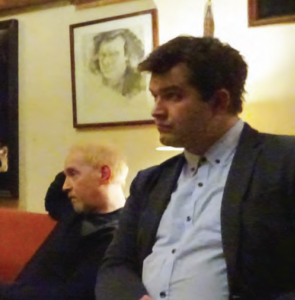
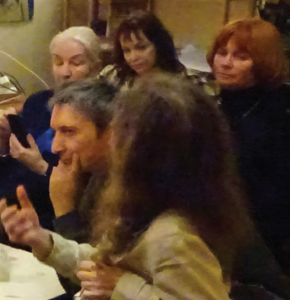

Speak Your Mind